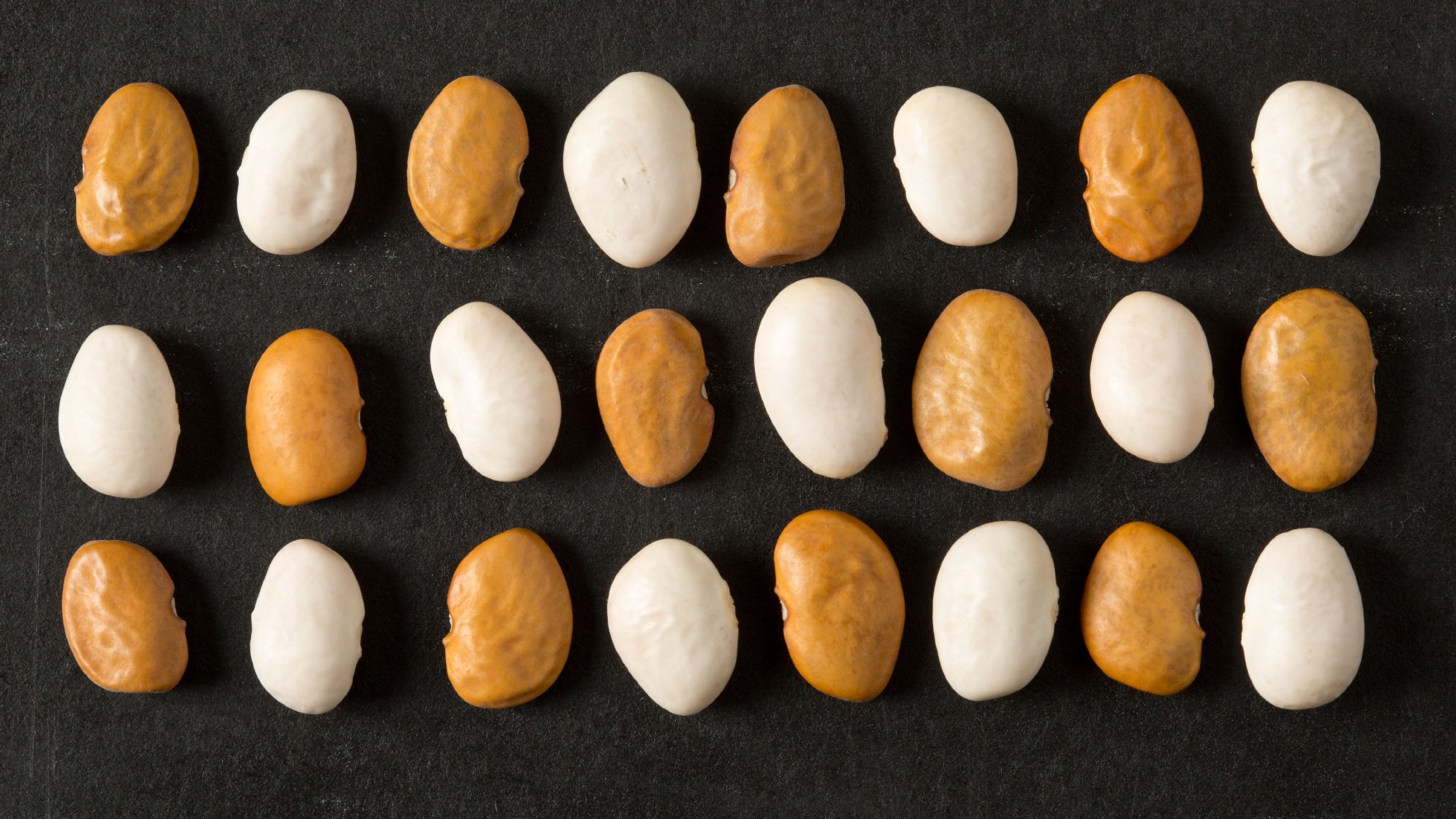In this weekly series, Associate Editor Tim Chin and Test Cook Sasha Marx take you behind the scenes of Cook’s Science and give you a glimpse into our recipe development process, from how we come up with recipe ideas, to test kitchen failures, to discoveries we make along the way. This week, we hear from Sasha.
After a week off to enjoy the holidays with friends and family it was exciting to get back to work in the test kitchen. On my docket: tepary beans. I had never heard of these desert legumes prior to learning in a recent Cook’s Science team meeting that we were publishing an article about them. I get pretty jazzed when it comes to working with ingredients or techniques I’m unfamiliar with, so I volunteered to develop a couple of related recipes. When our first shipment of beans from Rancho Gordo arrived at the office, I got to work acquainting myself with their texture and flavor by soaking, simmering, pressure cooking, and tasting in a seemingly endless number of permutations. Working in the kitchen at ATK, there are moments every week when Tim and I are reminded of how cool a gig this is. This was not one of those moments. Plain beans just aren’t the most exciting or tasty thing to eat for a week straight. I had to remind myself that it’s part of the recipe development process, and that daily tastings of koji fried chicken, while delicious, wouldn’t be healthy.
Taken on their own, I feel pretty confident saying tepary beans are not going to blow up as the hot crop of 2017 (food trend tastemakers are predicting this will be teff’s year, and are also still trying to make purple cauliflower and “fetch” happen). To me, beans are the black sheep of the legume family (gas bias?), with edamame and chickpeas sharing most of the limelight. While tepary beans may not be vying for “it” status, mostly due to the fact that they’re relatively unknown to most consumers and primarily available online, they might just one day have their time in the sun, figuratively and literally, due to the unfortunate reality of climate change. The plant’s high tolerance to drought means that it might become a lot more common in the near future as agriculturalists, farmers, and we as consumers are forced to adjust. The good news? We can make tasty things with tepary!

Initial testing got us in agreement on the best treatment for cooking both white and brown tepary beans—an overnight, room temperature soak in water with the addition of a little salt and baking soda (check out the recipes to learn why). Most recipes call for ditching that soaking liquid and simmering the beans with fresh water, but in doing so you ditch a ton of flavor that leaches into that overnight bath, as well as valuable starch that brings body to soups and braises. But saving that water presents its own set of problems, as I later learned.
The beans ate way too salty when I soaked them following our standard ATK water-salt ratio (3 tablespoons salt per gallon of water), which doesn’t assume any re-use of the (already salty) soaking liquid in the final product. I had to go through multiple rounds of side-by-side testing to determine the exact amount of salt that would have both the desired effect of softening the beans’ cell-wall structure while also properly seasoning them during cooking. By coming down on salt for the overnight brine, we needed the added cell-wall weakening boost of baking soda to take the tepary beans from pretty good to awesome. The baking soda in the cooking water was also doing its cell-wall weakening job, but, since I added that water to the soup instead of discarding it, it did the job a little too well. The baking soda was not only tenderizing the beans, but also turning the vegetables in the first batches of tepary soup to mush. Onions disintegrated completely and carrots and celery were the al denture texture of college dining hall pasta, giving the dish a closer resemblance to bad jarred salsa than the faki soupa (lentil soup) recipe I was trying to riff on.

These failures are an important part of the job, where we figure out what works and what doesn’t work. And once we get it right—in this case, by adding an extra step to keep the vegetables toothsome—it more than makes up for the bland bean tasting moments. I think both the white tepary hummus and the Greek-style brown tepary soup are great introductions to these magical beans and healthy, tasty options for the post-holiday shedding and shredding season.
Photography by Steve Klise.




